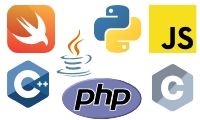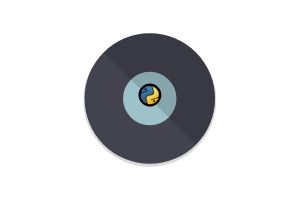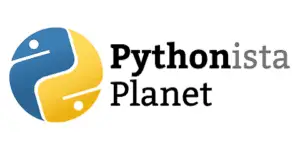There are good reasons to choose a programming language. We all love Python and use it because it is the easiest, most popular, and powerful programming language out there in the programming world.
But it is not perfect. Python has both pros and cons compared to other programming languages. We all know the pros of Python, don’t we? Today, let us look at some of the disadvantages of Python that you may not know already.
What are the main disadvantages of Python? The main disadvantages of Python are its slowness during execution, difficulty in switching to another programming language, weak in mobile application development, high memory consumption, and less popularity in the enterprise development sector.
Now, let’s have a look at each of them in detail.
1. Python is Slow at Runtime
Python is measurably slower at runtime compared to other programming languages like Java, C++, PHP, Javascript, Swift, etc. This is a major concern for programmers when they are writing giant programs with lots of lines of code.
Python is not closer to hardware because it is a high-level programming language, unlike C or C++. Python code execution takes place with the help of an interpreter instead of the compiler. The interpreter executes the code line by line, which causes it to slow down.
Python is a dynamically typed language. That means, it executes many common programming behaviors at runtime that static programming languages perform during compilation.
In dynamically typed languages, we don’t need to specify variable data types while assigning variables. The data type is assigned to the variable during runtime. You can read this article to learn more about the differences between statically-typed and dynamically-typed languages.
Hence, every time the variable is read, written, or referenced, its data type is checked and the memory is allocated accordingly.
That is one of the reasons why statically typed languages like C, C++, and Java execute faster at runtime. But, even dynamic languages like Javascript and PHP are faster than Python during runtime. Why?

One of the main reasons for the slowness of Python is the presence of Global Interpreter Lock (GIL). GIL allows only one thread to execute at a time even in a multi-threaded architecture with more than one CPU core.
As a result, multithreaded CPU-bound programs may be slower than single-threaded ones. If you want to know more about the reasons behind the slowness of Python, check out this article.
But, there is a lot to be said about the simplicity of writing code. We all know how much development time is saved by using Python in our projects.
Even though it is not the ‘fastest to run’ programming language, it is the ‘fastest to write’ programming language. Don’t forget that the servers are also getting faster. Hence, it is reasonable to write your code in Python.
Later, if your app becomes successful, then you can optimize the code using several methods. So, do not worry about the speed of the language. Focus on creating beautiful apps.
2. Python is Not Great for Mobile Application Development
Even though Python is a server-side language, it is not the best one when it comes to mobile application development. Android and iOS application development were pretty much out of the question with Python.
Thankfully, a lot of advancements have been made to improve the performance of Python in the mobile application development world. Libraries like Kivy and Beeware were developed to serve the purpose of creating mobile applications using Python.
Kivy is a free and open-source Python library for developing mobile apps and other multitouch application software that can run on Android, iOS, GNU/Linux, OS X, and Windows.
BeeWare also allows you to write your mobile app in Python and release it on multiple platforms.
These libraries are pretty useful. But still, they can’t do well like the other competitor languages are doing. Programming languages like Java, Kotlin, Swift, Javascript, etc. are crushing it in mobile app development.

If you are thinking about writing a cool mobile application today, it might not make much sense to build it with Python. You will not be able to use the platform-specific features as well with Python.
If you want to create an android application, it is better to do it with Java or Kotlin. If you are going the iOS route, then Swift is your go-to language.
I know many hardcore Python fans want to use Python for all their programming needs. But that is not the best way to look at software development.
If you want to do something, then find out the best technology used for that purpose and learn it. Do not depend only on Python for doing all the things that you want.
Every language has its dominance in certain areas. When it comes to machine learning and back-end web development, Python is the king. But, in the mobile apps world, it is not the best one out there.
If you have decided that you want to use Python only, then learn libraries like Kivy or Beeware and build your apps.
I hope that in the future, Python will become a leading player in mobile application development as well. Python is the most popular language right now, and we can expect the best.
3. Python Programmers face Difficulty in Using Other Languages
Many Python programmers do not enjoy coding with other programming languages. This is because they feel that other languages are much more difficult to use. They might be used to code with Python, which is the easiest programming language in the world.
If you are a hardcore Python fan, then you might be facing this issue. Being Pythonistas, we love Python so much because it is simple, popular, and powerful. Out of these, the main reason why we love Python is its simplicity.
Python is so easy to code when we compare it with other languages like C++ and Java. Python is more close to the human language and we hate some other languages that are more close to the hardware.
Most people who are entering the programming field prefer learning Python over other languages because of its simplicity. Also, many universities are using Python as the entry-level programming language to teach their students.
Even though simplicity is one of the main advantages of Python, this could be a con for programmers at times, especially when they are required to learn and code in other languages.

We can’t do everything with Python. If you only need to code in Python while doing your job, then you are lucky! But, most of us might need to use other programming languages for some particular requirements.
This is when things get a little bit tougher. Shifting to a new language from Python is difficult as the programmer might find it difficult to adjust to the new features. It will take some time to get familiar with the new language.
Even though we love Python, do not be religious about it. Do not think that you will only use Python in your entire career. You must be able to adapt to other programming languages and technologies.
I know that most Python programmers do not like this, but when you work for a company, you might have to deal with other languages as well. If you are a freelancer working for yourself, then you have a lot more freedom.
Full-stack web developers, can’t do everything with Python. They might also need to learn Javascript for doing some cool front-end stuff. Even if it might seem overwhelming at first, it is important to have an open mind to learning any technology.
Most of the concepts in all the programming languages are similar. You will be able to pick up any other programming language if you are good with Python. So, be ready to adapt to any technology if required.
It is always good to have a ‘T-shaped knowledge’ in software development. You should know as many technologies as you can. But, you should be a specialist in one specific technology. So, learn other programming languages as well, but be an expert in Python.
4. Python has High Memory Consumption
For memory-intensive tasks, Python is not always the best choice. The memory consumption of Python is high due to the flexibility of the data types.
Python has automatic garbage collection when objects go out of scope. Due to this functionality, Python intends to remove a lot of the complexity of memory management that languages like C and C++ involve.
However, for large and long-running systems developed using Python, dealing with memory management is difficult.
In Python, the interpreter keeps reference counts to objects being used. When an object is not referred to anymore, the garbage collector is free to release the object and get back the allocated memory by calling methods like free() or delete().

When looking for memory leaks in your code, one method is to use Heapy to find out which objects are holding the most memory. Heapy is a useful tool for debugging memory consumption.
So, before you write Python code for highly memory-intensive tasks, it will be great if you can gain a better understanding of the space efficiency of the code and the underlying packages used. However, there are many solutions that you can use to detect memory issues and fix memory leaks.
5. Python is not used commonly in the Enterprise Development Sector
Python is a powerful programming language with minimal worries for programmers and has built a considerable buzz in the large-scale web development space. But, despite its popularity, Python has failed to penetrate enterprise development.
One of the main reasons for this might be Python’s limitations when it comes to database access. As compared to popular technologies like JDBC and ODBC, the database access layer of Python is found to be a bit underdeveloped and primitive.
Hence, it is usually not applied in enterprises that need smooth interaction of complex legacy data.
Also, the absence of GUI and teamwork tools, lack of true multiprocessor support, absence of a commercial support point, and the lack of availability of Python in mobile application development might be some potential weak points.
Python is also very rarely used on the client-side of a web application. It also has some design restrictions since it is dynamically typed.
These might be some of the reasons why Python is not often used in the enterprise development sector, as compared to languages like Java.
Conclusion
Every programming language has its benefits as well as disadvantages. Python also has some limitations. The main disadvantages of Python are its slowness during execution, difficulty in switching to another language, weak in mobile application development, high memory consumption, and less popularity in the enterprise development sector.
Even though these are some concerning cons, it is still one of the best programming languages out there. These disadvantages do not make us so worried.
Python has a huge list of advantages, and that is why it is the most popular programming language in the world. Check out this article to see 10 exciting advantages of Python.
When I was writing this article, it was difficult for me to find a lot of disadvantages to Python. I could find only a few cons. If you know any other disadvantages of the Python language, then share that in the comments section below.
If you are new to programming, I would highly recommend you start your journey with Python. I have an article on the fundamentals of Python. Check it out here.
If you have any doubts or queries, let me know in the comments. I will be happy to help you.
I would appreciate it if you would be willing to share this article. It will encourage me to create more informational articles like this.
Happy coding!


Great article bro
Thanks for the comment bro.
I really needed this article for my school report.
Thank you for the article. At least this managed to prove to some Python fanatics that it isn’t the best programming language in the world.
Not sure why Python fans constantly miss one of the greatest weaknesses of the language, source code control. Pythonistas, as you call them, seem to have a disdain for source code control in production environments. They get one of the many runtime errors (that Python is famous for), and then they bang out some fix in real-time, but then never check-in the change. As a result, the same bug just keeps happening again and again…
Personally, I think Python has its place in a tech stack, but it is just not for everything, its just not…
“Python is the easiest programming language”
This is simply false. Python is definitely NOT the easiest programming language in the world. There are plenty of easy languages that can compete with Python.
You also left out some major problems with Python:
1. Versions
There are a million versions of Python. Even when I am trying to do something simple, I sometimes run into Python code that will only work with a specific MINOR revision. That’s not to mention the massive amounts of 2.7 code that is still around and won’t work in Python 3.
There is a lot of incompatibility and things get broken. I can’t count the number of times I’ve had to help someone deal with a library that was broken in a new version of Python or needed some very specific version.
2. The install environment
Related to 1, there are too many ways to do things and if you are new to Python it can be a big nightmare. It can be a pain even if you aren’t new.
https://imgs.xkcd.com/comics/python_environment.png
3. The community
While most Python fans and developers are genuine and helpful people, there is an obnoxious subset of Python fans that are super annoying. I have had otherwise productive conversations derailed by these fanatics, who insist on forcing their dogmatic opinions on everyone. It’s been very frustrating on programming forums to help new users who want to learn to program. Whenever any language other than Python is suggested, the Python crazies swoop in and disrupt the thread until it gets locked.
4. Bad habits
Indenting can make things fairly uniform but it also can create situations where lines begin to wrap and look awful or cause problems. It also gets programmers used to the bad idea of a start identifier with no ending one. And Python defaults to passing by reference instead of value, which is the opposite of pretty much every other language and a bad idea.
5. Dynamic typing
Depending on the situation, dynamic typing can be good or bad. It can be really confusing for new programmers, especially when they need to debug something. It can also making understanding code a big pain because often there’s no way to tell what the code is doing. You can’t identify the data at all. For a lot of people, strict types are easier because it’s consistent.